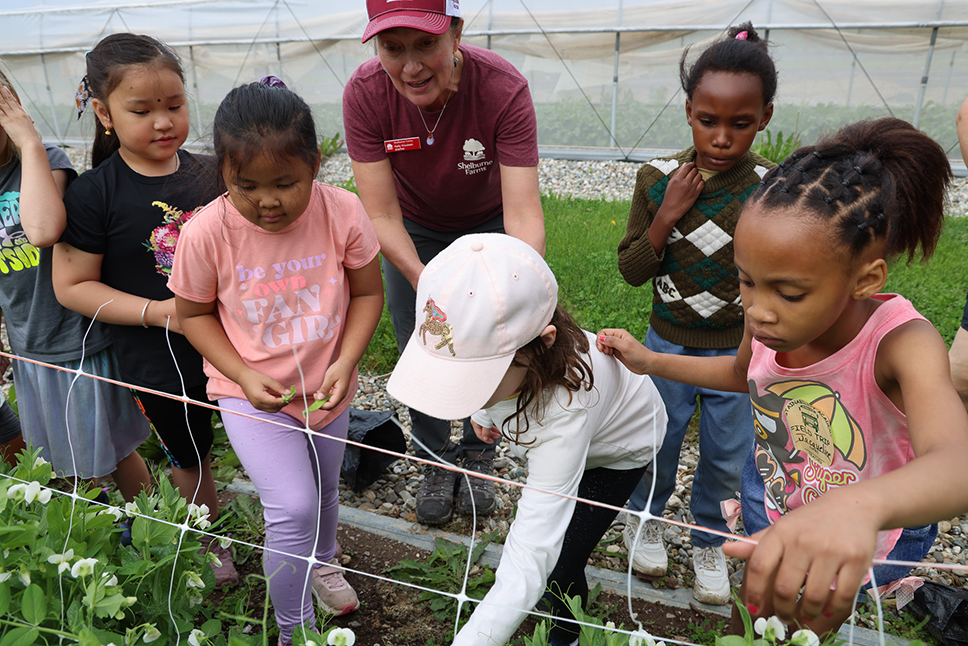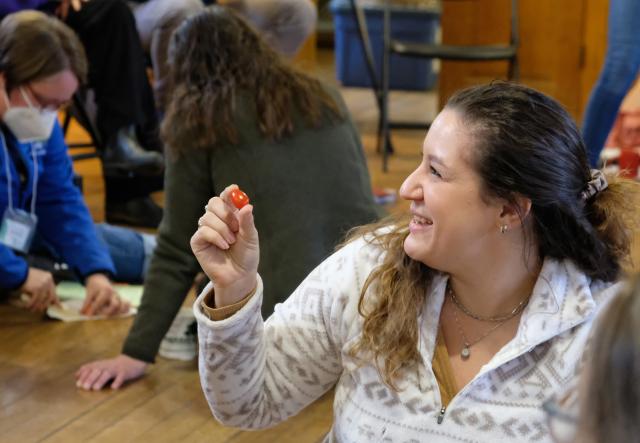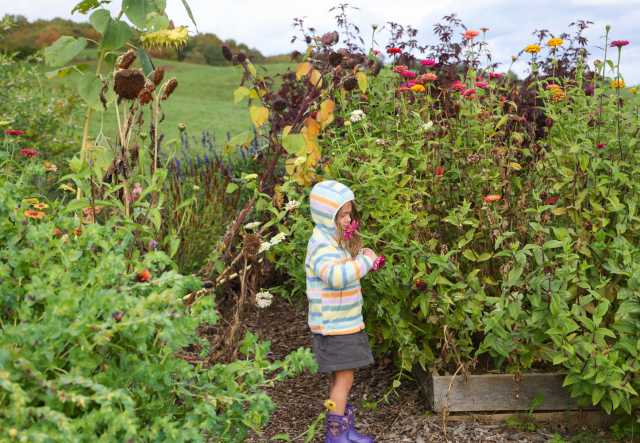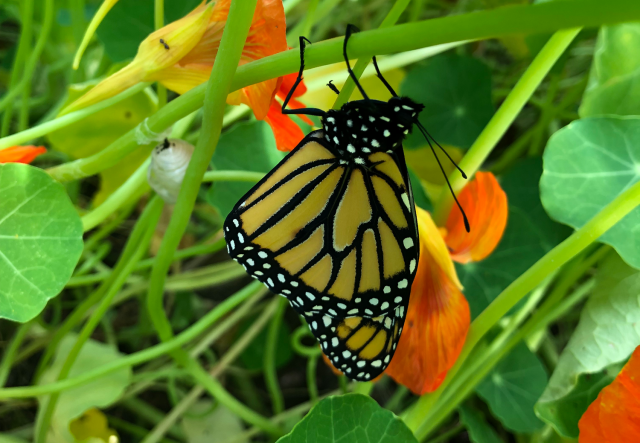Lovely work as always, Rina et. al!
Three Garden Activities for Early Learners
From our collaborators at Mass Audubon

Rina Zampieron, State-Wide Early Education Manager with Mass Audubon, firmly believes all young learners should learn about and have access to time in nature. One way to make this more approachable? By starting with a few simple garden planters around the classroom.
“There are so many different kinds of gardens,” explains Rina. “A garden doesn’t have to be huge. A growbag of cherry tomatoes or one or two raised beds of herbs and flowers is a garden, too.” Rina, who coaches teams of educators and school nutrition professionals in the Northeast Farm to School Institute, talks about farm to early childcare as a gateway: a gateway to more nature-based learning, to learning about our food sources and the people who grow it, and to a sense of curiosity and wonder.
Last summer, Rina shared some of her favorite garden-related activities with early educators at the Farm to School Institute. If you work with learners ages 0-8, give these ideas a try!
Garden Olympics
From Mass Audubon Early Education

With the Summer Olympics around the corner, here’s a simple activity to bring the games closer to home while building observational skills.
Instructions
- Create a document with a simple 3x3 table. Label each square with a superlative of your choosing, like tallest plant, largest flowers, or most colorful bloom, leaving room for students to draw or write their medalist in each square. Or, download a PDF of Mass Audubon’s Garden Olympics pre-labeled chart.
- Print the sheet and distribute copies to your students, then venture into the garden to see which plants rise to the top in each category. Talk about your observations and what students notice. Where did students have observations in common? Where were they different?
- For older ages, add in more science by challenging them to make predictions. In one month, how might what we see change? Will a different plant be the tallest? Will new blooms appear or disappear?
- Repeat the activity once a month as plants in your garden grow. How did your observations change over time?
- Next year, start the Garden Olympics while your plants are still seeds. Looking at the seeds, what do students predict will be the biggest plant, or the most colorful? Label what you plant, and see how your predictions play out.
Garden Soundscapes and Natural Pest Spray
From Mass Audubon Early Education

Gardens are full of tasty treats, and not just for us. Bugs, birds, mammals, and others love to munch on our hard-earned garden produce. How can we safely discourage garden thievery? Keep birds and mammals away with visual and audio deterrence via a musical, moveable mobile! A collection of beautiful junk and recyclables makes both lovely decoration and a garden guard.
Suggested materials
- Coat hangers or wire
- Foil trays and tins
- Balls of aluminum foil
- Old keys or silverware
- Metal hardware like bolts, nuts, brackets, and cabinet handles
- Yarn, twine, or ribbon
- CDs or DVDs
- Tinsel or other metallic ribbon
- Sticks or pinecones
- Plastic beads
- Canning jar rings
Assembly
- Select an old metal coat hanger, piece of wire, or large stick from which the rest of your objects will hang.
- Select and arrange the objects you’d like to have dangling from your mobile. Aim for a range of objects that will produce both sounds (like an old fork hitting a pie plate) and things that sparkle and shine (like old CDs or tinsel).
- Attach your objects to your coat hanger using yarn, twine, or ribbon, keeping in mind that the longer your strings, the higher your mobile will need to be off the ground.
- Hang the sculpture from a garden post, fence, or tree bordering your garden space.
For smaller pests like bugs, it’s all about smell and taste. To level up your pest deterrence, make your own plant-safe spray. Try mixing some of these ingredients with water in a spray bottle. Your spray will be food-safe and non-toxic, but bugs sure don’t enjoy it! For older ages, try making a few different combinations, and study which combination works best to deter which pests.
Suggested ingredients
- Natural dish soap (not detergent)
- Chopped garlic or onion
- Chili or cayenne powder/fresh chopped
- Citronella leaves
- Vinegar
Planning a Dream Garden
From Mass Audubon Early Education

If you’re designing a garden space, loop your young learners into the process with a collage activity! Rina advises that when it comes time to purchase and plant, every garden plan should be tailored to your classroom, including your space constraints; conditions like soil, sun, and water; your learners’ specific needs; and your goals, whether producing food or supporting pollinators.
A specific piece of advice for the earliest learners: choose plants that are edible and hardy (mint is a great choice for these reasons!) and flowers that are edible and colorful. Older learners may enjoy sensory delights like herbs or Lamb’s Ears.
This activity works well towards the end of winter when you might start thinking about your upcoming garden, but can be a fun visualization any time of year.
Instructions
- Start the conversation about what the plants are doing right now. Perhaps some are dead, others are “sleeping,” and some are “awake.”
- Assemble and distribute drawing and collage materials, like seed catalogs (free from companies like Burpee and other seed suppliers), gardening magazines, or even calendars. If you have an existing garden, you may give children a template of your space (such as number and location of planters/raised beds), or you can make it completely open ended.
- Allow children to cut and paste, or draw, what they’d want the garden to look like.
- Have them share as a class, post their plans on the walls, and discuss the different plants they listed. Are all the plants familiar to everyone? What things reflect foods children bring for lunch? Are there any plants that some children haven’t seen or tasted before (maybe you could bring one in!).
- You can also let this inform your decisions about what kinds of seeds or seedlings you might want to grow.



